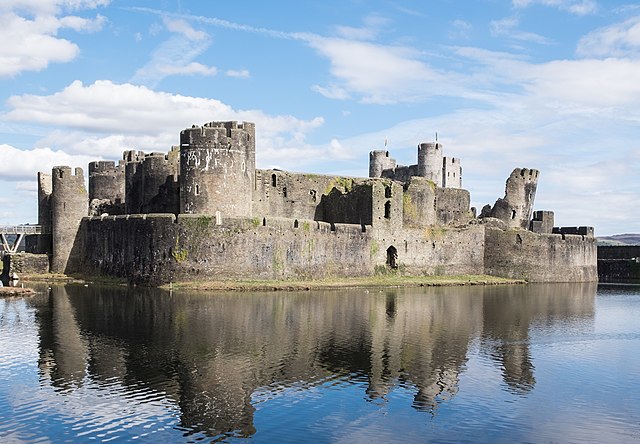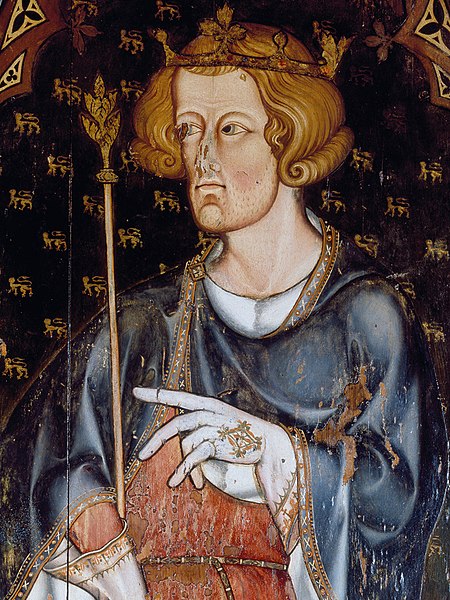Welsh rebellions against English rule
A series of Welsh rebellions broke out in the century following the conquest of Wales by Edward I in 1283, which had brought the whole of Wales under the control of the Kingdom of England for the first time. In 1400, Welsh discontent with English rule in Wales culminated in the Welsh Revolt, a major uprising led by Owain Glyndŵr, who achieved de facto control over much of the country in the following years. The rebellion petered out after 1409, and after complete English control was restored in 1415 no further major rebellions occurred.
Owain Glyndŵr statue in Corwen
Llywelyn the Last marble statue, City Hall, Cardiff.
Stone memorial to Madog ap Llywelyn at All Saints' Church, Gresford, Wales. He died in 1331. A Welsh document describes him as "the best man that ever was in Maelor Gymraeg"
Caerphilly Castle
Conquest of Wales by Edward I
The conquest of Wales by Edward I took place between 1277 and 1283. It is sometimes referred to as the Edwardian conquest of Wales, to distinguish it from the earlier Norman conquest of Wales. In two campaigns, in 1277 and 1282–83, respectively, Edward I of England first greatly reduced the territory of Llywelyn ap Gruffudd, and then completely overran it, as well as the other remaining Welsh principalities.
The Llywelyn Monument at Cilmeri which marks the site of the Battle of Orewin Bridge
Caernarfon Castle, the "capital" of English rule in North Wales for two centuries after the conquest
Image: Llywelyn ap Gruffudd in the Parliament of Edward I, King of England
Image: Edward I Westminster Abbey Sedilia








